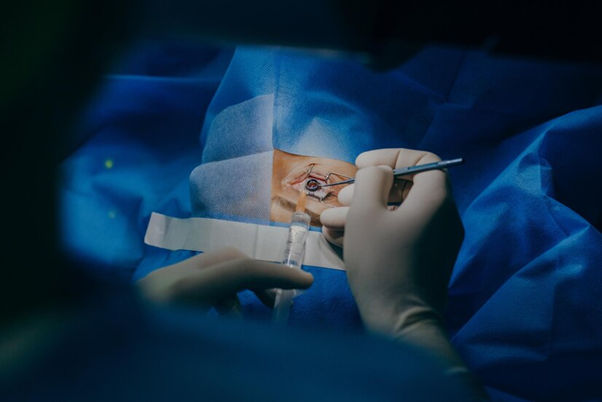We provide advanced treatments to help improve and restore vision. One such treatment is vitrectomy, a surgery that is often recommended for people with serious eye problems, especially those affecting the retina or vitreous humor (the gel-like substance inside the eye). If you’re dealing with issues like retinal detachment or diabetic retinopathy, vitrectomy could be a life-changing treatment option.
What is Vitrectomy?
Vitrectomy is a surgical procedure where the vitreous humour, the gel inside your eye, is removed and replaced with a special fluid or gas. This surgery is done when the vitreous humor is causing problems with the retina (the light-sensitive layer at the back of the eye) or other parts of the eye. The goal of vitrectomy is to restore or improve vision by treating eye conditions that affect the retina, such as retinal detachment, diabetic eye disease, or bleeding inside the eye.
Why is Vitrectomy Needed?
Vitrectomy may be needed if you have one of the following conditions:
- Retinal Detachment: This happens when the retina becomes separated from the back of the eye. If untreated, it can lead to permanent vision loss. Vitrectomy can help reattach the retina and prevent further damage.
- Diabetic Retinopathy: In diabetic patients, high blood sugar can damage the blood vessels in the retina, leading to bleeding or scarring. Vitrectomy can remove blood from the vitreous and improve vision.
- Macular Holes: These are small holes in the part of the retina responsible for sharp vision (the macula). Vitrectomy helps close these holes and improve vision.
- Vitreous Haemorrhage: If bleeding occurs inside the vitreous humor due to an injury or retinal disease, vitrectomy can remove the blood and clear the vision.
- Eye Injury or Trauma: In some cases, eye trauma can damage the retina or vitreous, and vitrectomy can help repair the damage.
How Does Vitrectomy Work?
Here’s what happens during a vitrectomy:
- Anesthesia: The procedure is done under local or general anesthesia, so you won’t feel any pain during the surgery.
- Making an Incision: The surgeon will make a small incision on the white part of your eye to reach the vitreous humor.
- Removing the Vitreous: The surgeon carefully removes the vitreous gel, especially if it’s causing problems with the retina.
- Replacing with Fluid: After the vitreous is removed, the eye is filled with a special saline solution or a gas bubble to help keep the retina in place and maintain the shape of the eye.
- Closing and Healing: The incision is usually so small that it doesn’t need stitches, and the eye begins to heal right after surgery.
Recovery After Vitrectomy
After your surgery, you may experience some swelling or discomfort in the eye, but this should go away in a few days. Here’s what to expect during recovery:
- Follow-Up Appointments: You’ll need to visit the doctor for follow-up checks to make sure your eye is healing well and that the retina has stayed in place.
- Activity Restrictions: It’s important to avoid heavy lifting or strenuous activities for a few weeks after surgery. You should also avoid rubbing your eye.
- Vision Improvement: It may take a few weeks or even months to see the full benefits of the surgery. Your vision will gradually improve as the eye heals.
- Medication and Eye Drops: Your doctor may prescribe medication, or eye drops to reduce any inflammation and prevent infection.
Vitrectomy is an effective surgical treatment for serious eye conditions like retinal detachment, diabetic retinopathy, and macular holes. If you have a condition that affects your retina or vitreous humor, vitrectomy could help restore your vision and improve your quality of life.
At Om Netra Kendra & Laser Vision Centre, we are committed to providing the highest level of care and treatment. If you think you might need vitrectomy or if you have concerns about your vision, schedule a consultation with us today. Our team is here to help you see better and live better.




